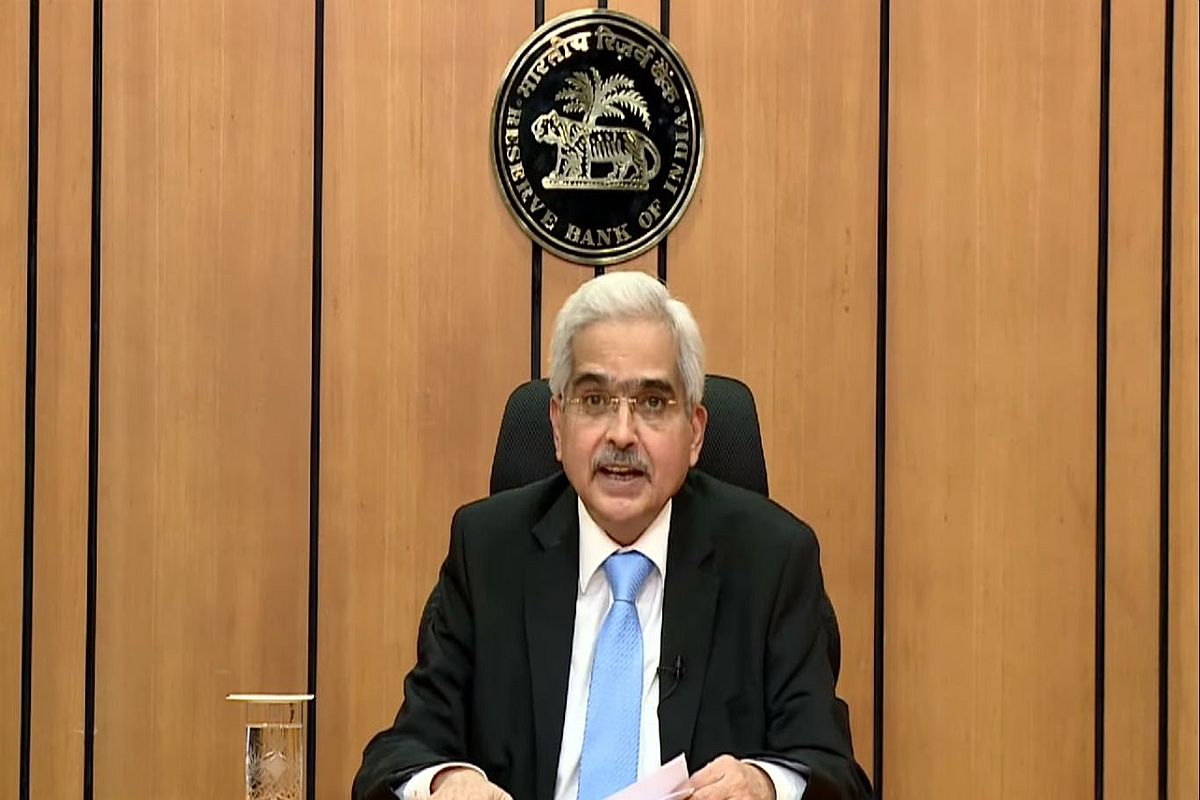Govt bonds worth Rs 32,000 crore to be auctioned on April 26
The Finance Ministry on Monday announced the sale of government bonds worth Rs 32,000 crore in two categories on April 26 (Friday).
Shaktikanta Das further informed that the GDP growth in 2020-21 is expected to remain in the negative category with some pick up in second half.

Reserve Bank of India (RBI) Governor Shaktikanta Das (Photo: IANS)
To mitigate the economic impact of COVID-19 outbreak, the Reserve Bank of India (RBI) on Friday again reduced the key lending rate by historic levels of 40 basis points from 4.4 per cent to 4 per cent.
Repo rate is the key interest rate at which the RBI lends short-term funds to commercial banks.
The reverse repo rate has also been reduced to 3.35 per cent, the RBI Governor Shaktikanta Das said in a briefing today. Earlier, the reverse repo rate was at 3.75 per cent, when it was slashed by 25 basis points in April.
Advertisement
Das said the central bank would maintain accommodative stance till growth revives.
Besides reducing the key lending rates, the apex bank took other major decisions keeping in mind the devastating economic impact of COVID-19 pandemic.
In one such decision, the RBI has extended the moratorium on interest payments on all term loans for another three months. It also allowed for repayment of accumulated interest on account of the moratorium through FY21.
“Three-month moratorium we allowed on term loans and on working capitals we allowed certain relaxations. In view of the extension of the lockdown and continuing disruption on account of COVID-19, these measures are being further extended by another three months from June 1 to August 31,” Das said at the briefing.
Further, the Group Exposure Limit of banks has been increased from 25 per cent to 30 per cent of eligible capital base for enabling the corporates to meet their funding requirements from banks. The increased limit will be applicable up to 30 June, 2021.
The RBI has also decided to relax rules governing withdrawal from Consolidated Sinking Fund (CSF) while at the same time, ensuring depletion of fund balance is done prudently. This will enable states to meet about 45 per cent of redemption of their market borrowings which are due in 2020-21.
The measures announced today have been divided into four categories: To improve functioning of markets; to support exports and imports; to ease financial stress by giving relief on debt servicing and better access to working capital; and to ease financial constraints faced by state governments.
Meanwhile, the Reserve Bank of India will extend a credit line of Rs 15,000 crore to the Export-Import (EXIM) Bank of India.
The announcement is part of the RBI’s latest measures to help businesses and the economy tide over the coronavirus crisis.
The Export-Import Bank of India provides financial assistance to exporters and importers with a view to promoting the country’s international trade. EXIM Bank predominantly relies on foreign currency resources raised from international financial markets for its operations and it is facing challenges to raise funds in international deb capital markets amid the coronavirus crisis.
The RBI governor, in his address, said that industrial production shrank by close to 17 per cent in March with manufacturing activity down by 21 per cent. Output of core industries have contracted by 6.5 per cent.
However, he pointed out that amidst this encircling gloom, agriculture and allied activities have provided a beacon of hope on the back of an increase of 3.7 per cent in food grain production to a new record.
He added that India’s foreign exchange reserves have increased by 9.2 billion during 2020-21 from April 1 onwards. “So far, up to 15 May, foreign exchange reserves stand at 487 billion US dollars,” Das said.
Shaktikanta Das further informed that the GDP growth in 2020-21 is expected to remain in the negative category with some pick up in second half.
Off late, several banks and rating agencies have forecast a drastic fall in India’s GDP growth rate, he said.
Briefing the media, Das said that the pandemic has severely impacted the global economy, including India’s. He said that the Coronavirus pandemic has dealt a crushing blow to the demand.
“High frequency indicators points to collapse in demand in March,” the RBI Governor said.
Das, however, showed faith and confidence on the resilience of the Indian economy, and said: “We have faith on the Indian economy.”
The RBI governor also stated that the macroeconomic impact of the pandemic is turning out to be more severe than initially anticipated.
“The MPC is of the view that the macroeconomic impact of the pandemic is turning out to be more severe than initially anticipated, and various sectors of the economy are experiencing acute stress.”
“The impact of the shock has been compounded by the interaction of supply disruptions and demand compression. Beyond the destruction of economic and financial activity, livelihood and health are severely affected.”
He said that it is necessary to ease financial conditions further which will facilitate the flow of funds at affordable rates and revive ‘animal spirits’.
The International Monetary Fund’s (IMF) global growth projections have revealed that in 2020, the global economy is expected to plunge into the worst recession since ‘The Great Depression’.
IMF Economic Counsellor has named it ‘The Great lockdown’ estimating cumulative loss to global GDP at around 9 trillion US dollars, which is greater than the economies of Japan and Germany combined.
However, India is among the handful of countries that is projected to cling on, somewhat tenuously, to a positive growth rate of 1.9 per cent. This is the highest growth rate among the G-20 economies as estimated by the IMF.
Advertisement